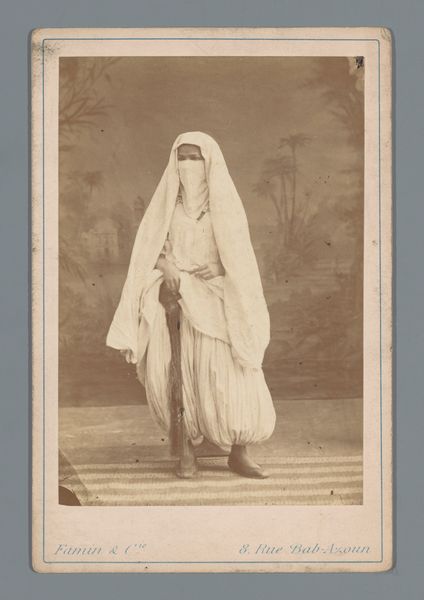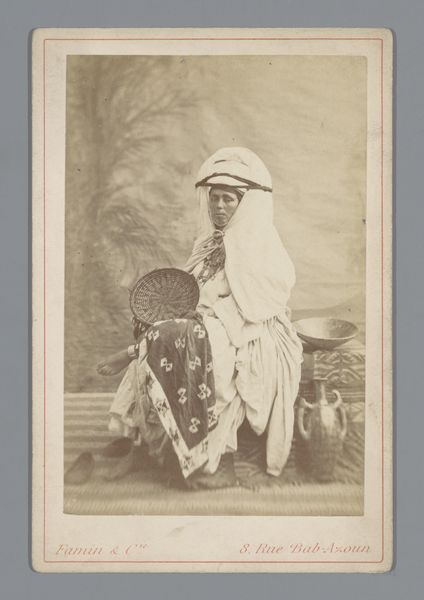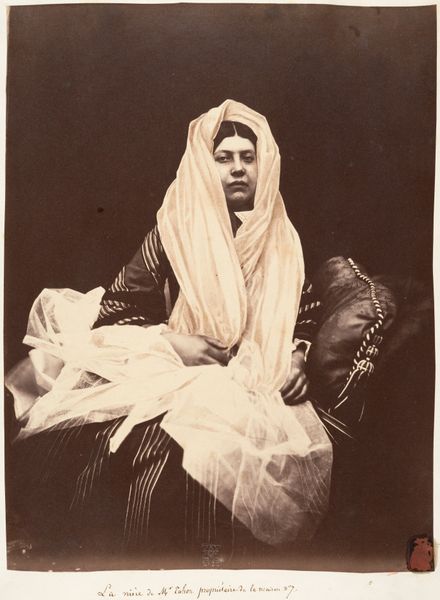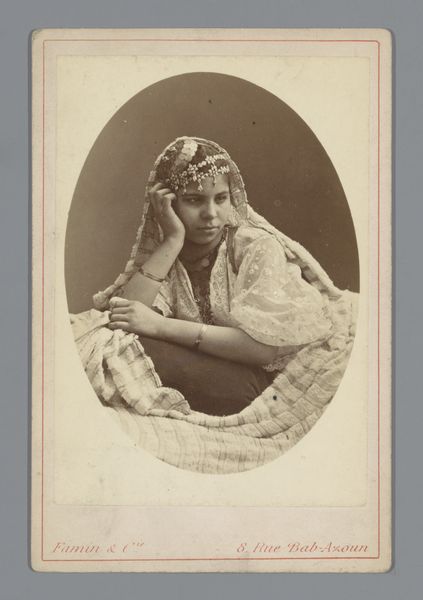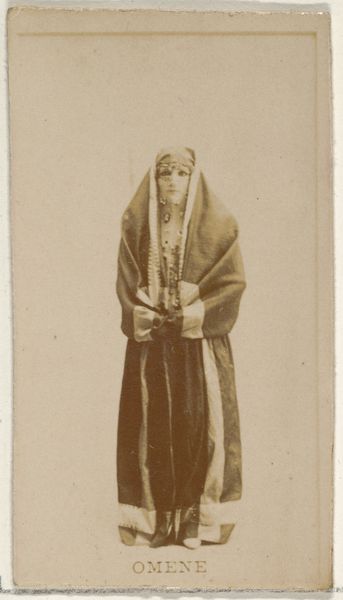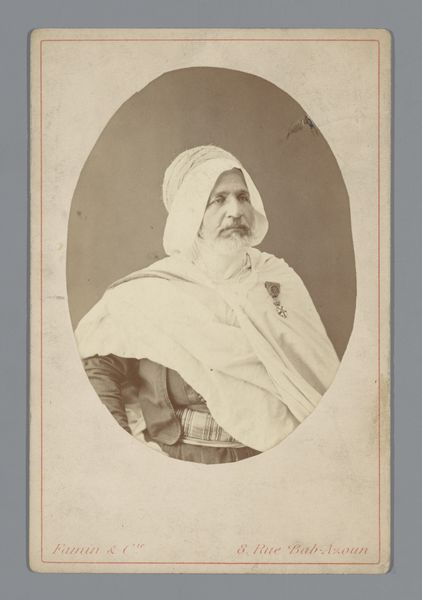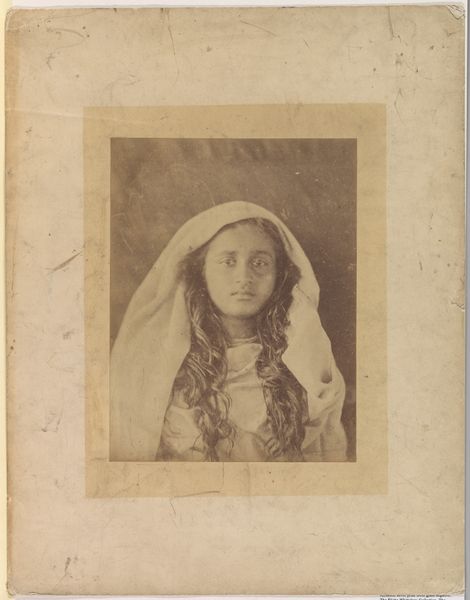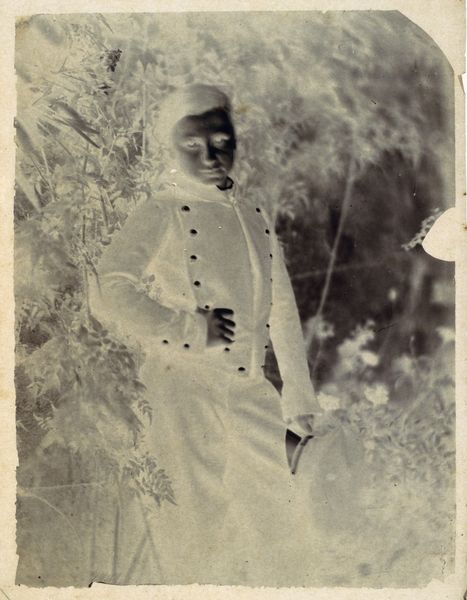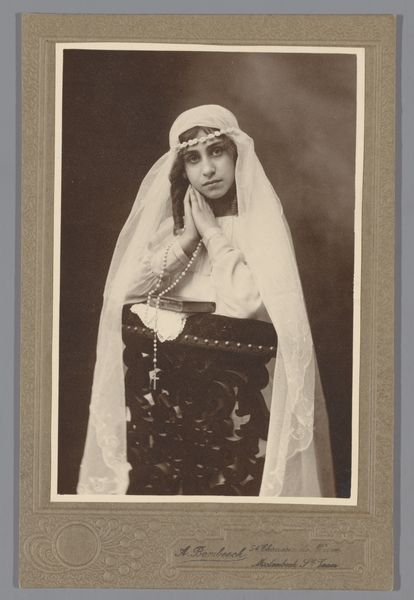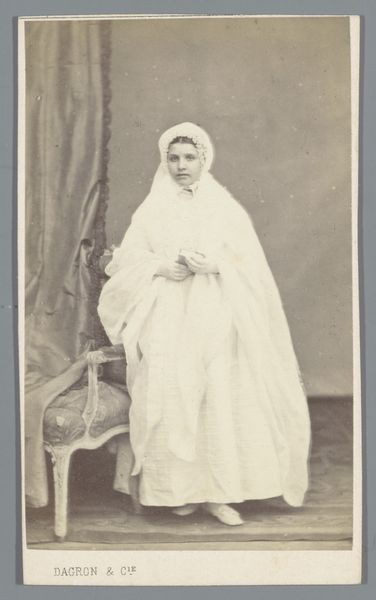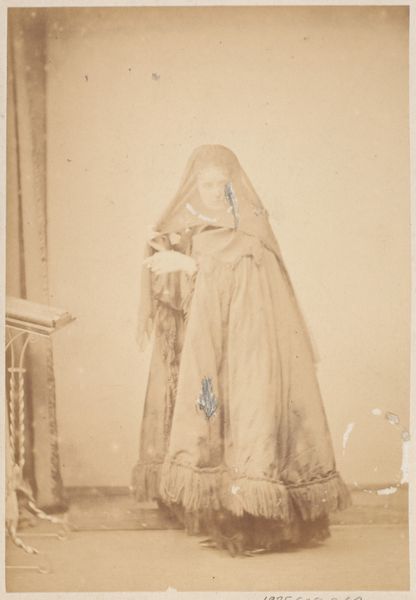
photography
#
portrait
#
photography
#
orientalism
#
genre-painting
Dimensions: height 275 mm, width 213 mm
Copyright: Rijks Museum: Open Domain
Curator: This photograph, likely taken between 1887 and 1900 by G. Lekegian & Co., is titled "Portrait of an Unknown Veiled Turkish Woman." Editor: The immediate impression is one of guarded beauty. The composition draws the eye to her gaze, the only exposed part of her face, softened by the delicate fabric. Curator: Indeed, the work exemplifies Orientalist tropes prevalent during that era, feeding into Western fascination with and often misrepresentation of Eastern cultures. What appears exotic also raises questions about agency and representation. Who was she, and what role did she play in its creation? Editor: Technically, the limited tonal range is compelling. The play of light on the different layers of fabric, the subtle gradations in the background—they almost lend a painterly quality to the photograph. Curator: But that light, carefully orchestrated, also highlights the limitations placed upon her. The veil, while perhaps culturally significant, visually speaks to restriction and anonymity. How complicit was she in constructing that image? Was this taken for a Western audience? Editor: I concede that context, but I see the subject's composed gaze as piercing. The composition itself is strong: the contrasting textures—the smooth veil against the ornamented rings—create a striking visual dynamic. Curator: True, yet these carefully chosen adornments perhaps tell us about the sitter’s class, or lack thereof; further contextual inquiry into photography during the turn of the century might yield insights. Did the studio dictate the entire look and feel? Were similar photographic practices enforced in other parts of the world? Editor: A useful point. Nevertheless, beyond the socio-historical reading, the artist achieved formal harmonies here. The photographer clearly was trying to imbue this “anonymous” portrait with qualities meant to elevate it. Curator: It reminds us that historical images, however beautiful or well-composed, need critical analysis regarding identity, cultural exchange, and often, colonial power dynamics. Editor: And sometimes it’s good to just stand back and marvel at the way a photographer was able to turn a captured moment into something undeniably exquisite.
Comments
No comments
Be the first to comment and join the conversation on the ultimate creative platform.
